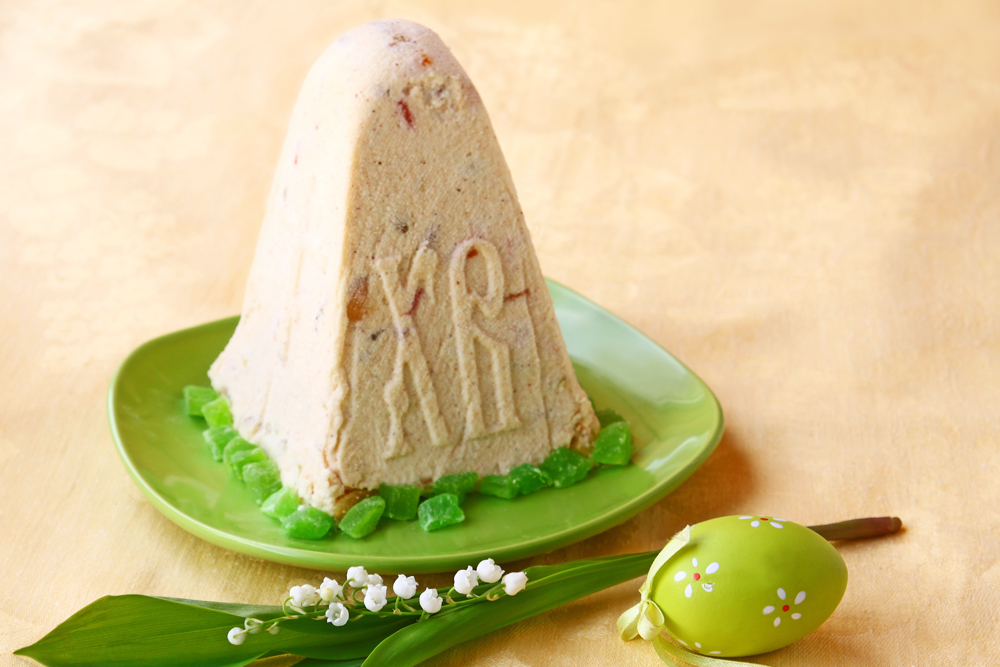
Traditional paskha has the Russian letters Х В imprinted on it: the letters represent the words Христос воскрес! (Khristos Voskres!), “Christ is Risen!”
Shutterstock / Legion-MediaThis year, Orthodox Easter will be celebrated on May 1, and in preparation, many believers are already making their special Easter dishes. A traditional Russian Easter table must include colored eggs, the Easter cake called kulich and the thick, creamy pudding called paskha (also the Russian word for Easter), which is prepared in the shape of a truncated pyramid. This shape symbolizes the tomb of Christ. Most cooks today use a special plastic or wooden mold for baking the paskha that has the Russian letters Х В carved on the inside. The letters represent the words Христос воскрес! (Khristos Voskres!), “Christ is Risen!” When the paskha is removed from the mold, the letters will be imprinted on the outside.
The most important requirement for making a delicious paskha is to use fresh ingredients, and the main ingredient in Paskha is tvorog, a type of cheese curds that can be found everywhere in Russia. Many women will make their own tvorog to make sure it is fresh for the paskha. It’s also fine to buy it in the store, but make sure to check the expiration date, and buy a type with at least 9% fat content. If you’d like to try making this dish but don’t have access to tvorog, you can try it with a mix of cream cheese and cottage cheese.
While the most traditional addition to paskha is raisins, cooks have been known to add cookie crumbs, chocolate pieces, candied fruit, jam, lemon zest, nutmeg, cinnamon or vanilla, depending on their preference.
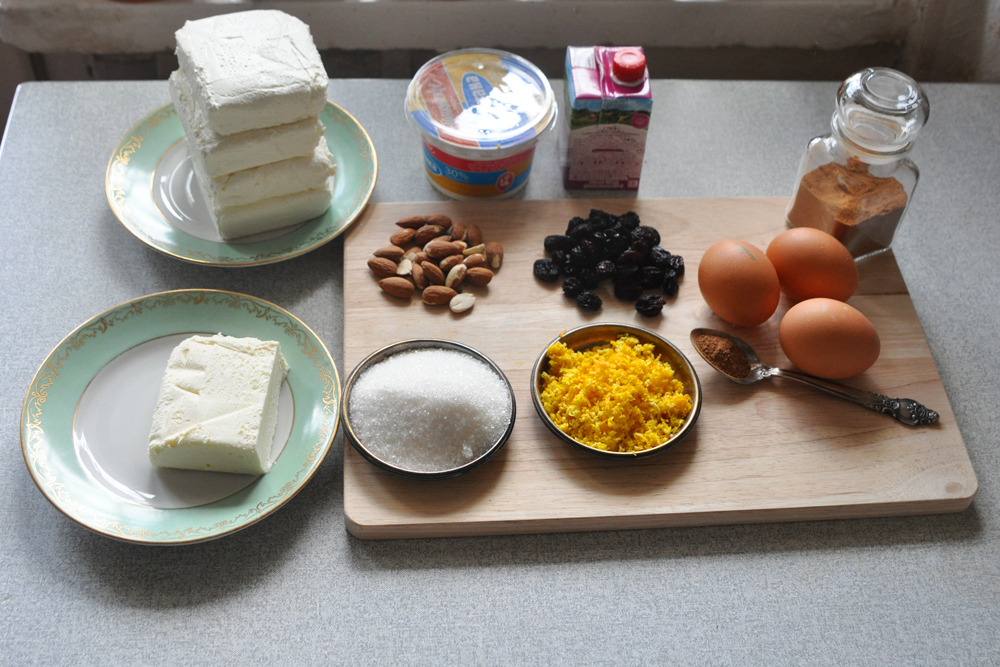 Source: Daria Sokolova
Source: Daria Sokolova
2. Combine the rest of the sugar with the egg yolks and add it to the tvorog mixture.
3. Whip the cream and fold it. Add the nutmeg and cinnamon.
4. Beat the egg whites until they foam, and carefully add them into the mixture. Mix it with a spatula, stirring only in one direction.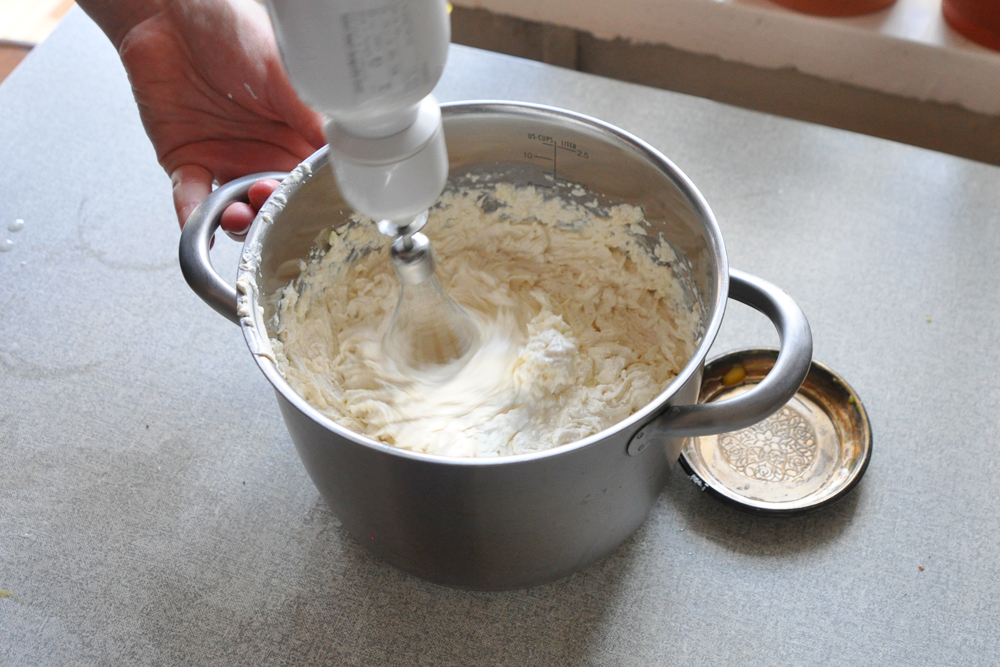 Source: Daria Sokolova
Source: Daria Sokolova
5. Add raisins and nuts (almonds work well). Mix again.
6. Cover the inside of your mold with 2-3 layers of cheesecloth. You can also substitute plastic food wrap. 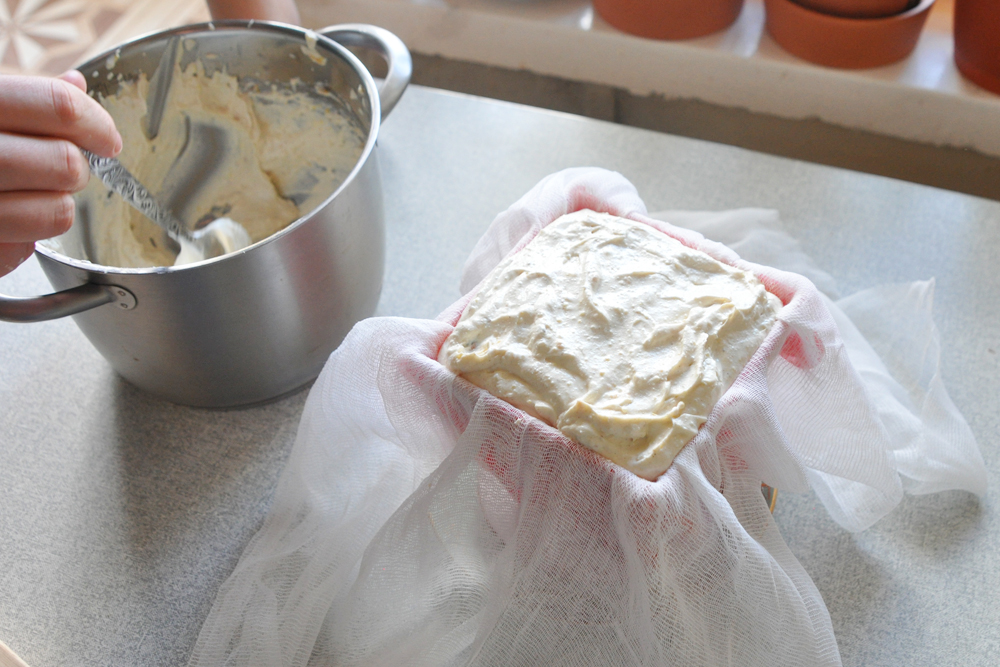 Source: Daria Sokolova
Source: Daria Sokolova
7. Carefully put the mixture inside the mold and cover it with a small board with a weight on it. Leave it in the refrigerator for at least 12 hours. Set it on a rimmed plate or other dish, as it will leak some liquid.
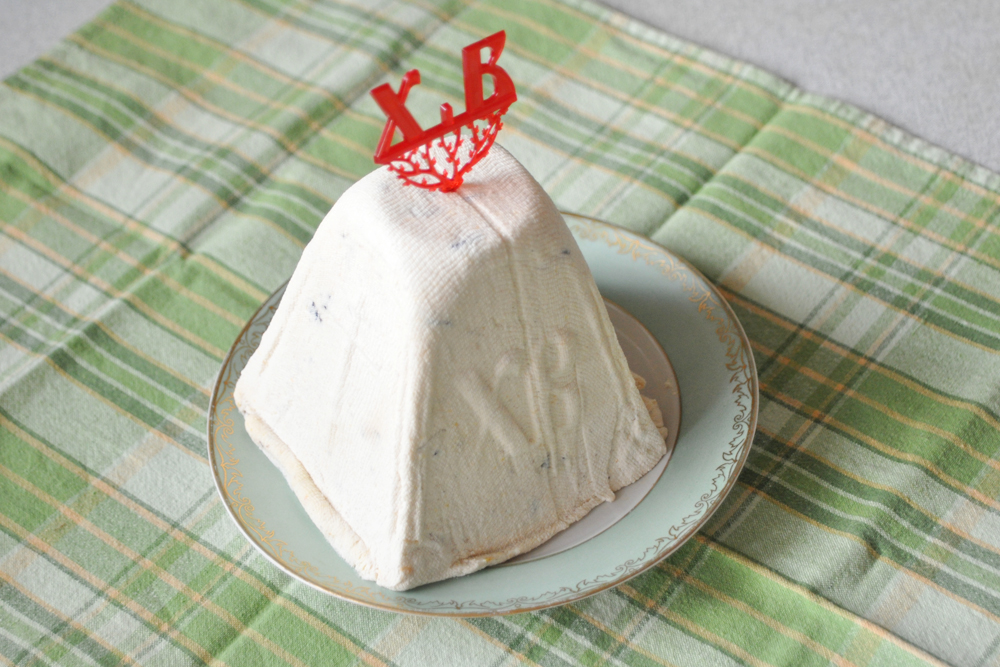 Source: Daria Sokolova
Source: Daria Sokolova
8. When the paskha has thickened, remove it from the refrigerator, turn over onto a plate and remove the mold and cheesecloth. 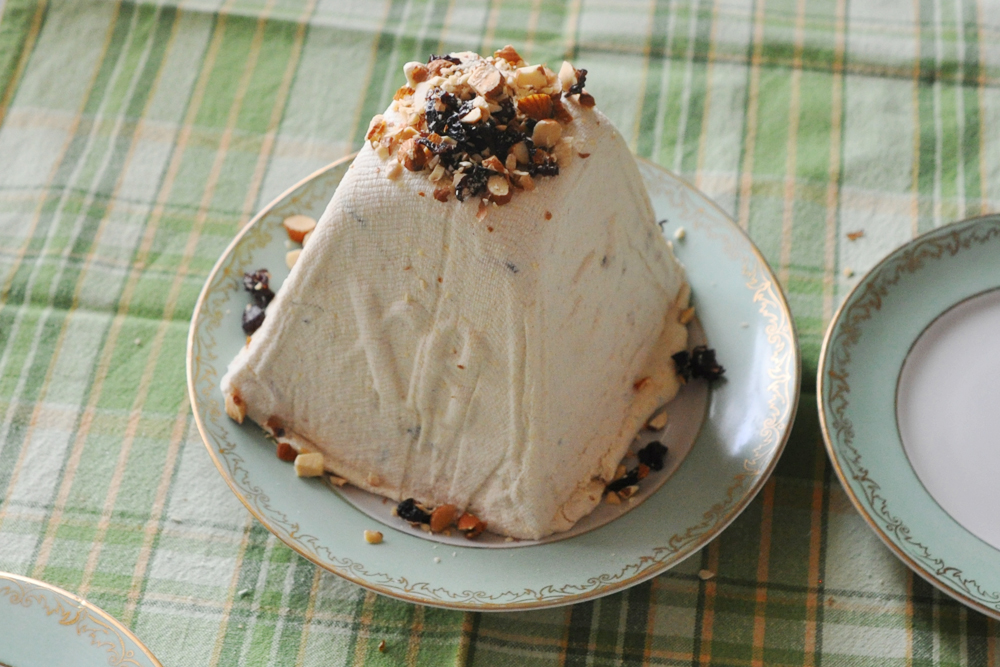 Source: Daria Sokolova
Source: Daria Sokolova
9. Before serving, decorate with nuts, candied fruit and berries.
All rights reserved by Rossiyskaya Gazeta.
Subscribe
to our newsletter!
Get the week's best stories straight to your inbox